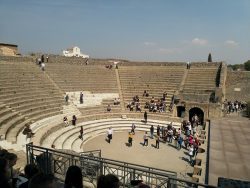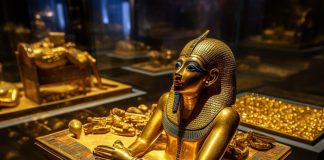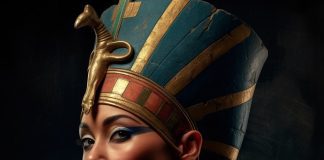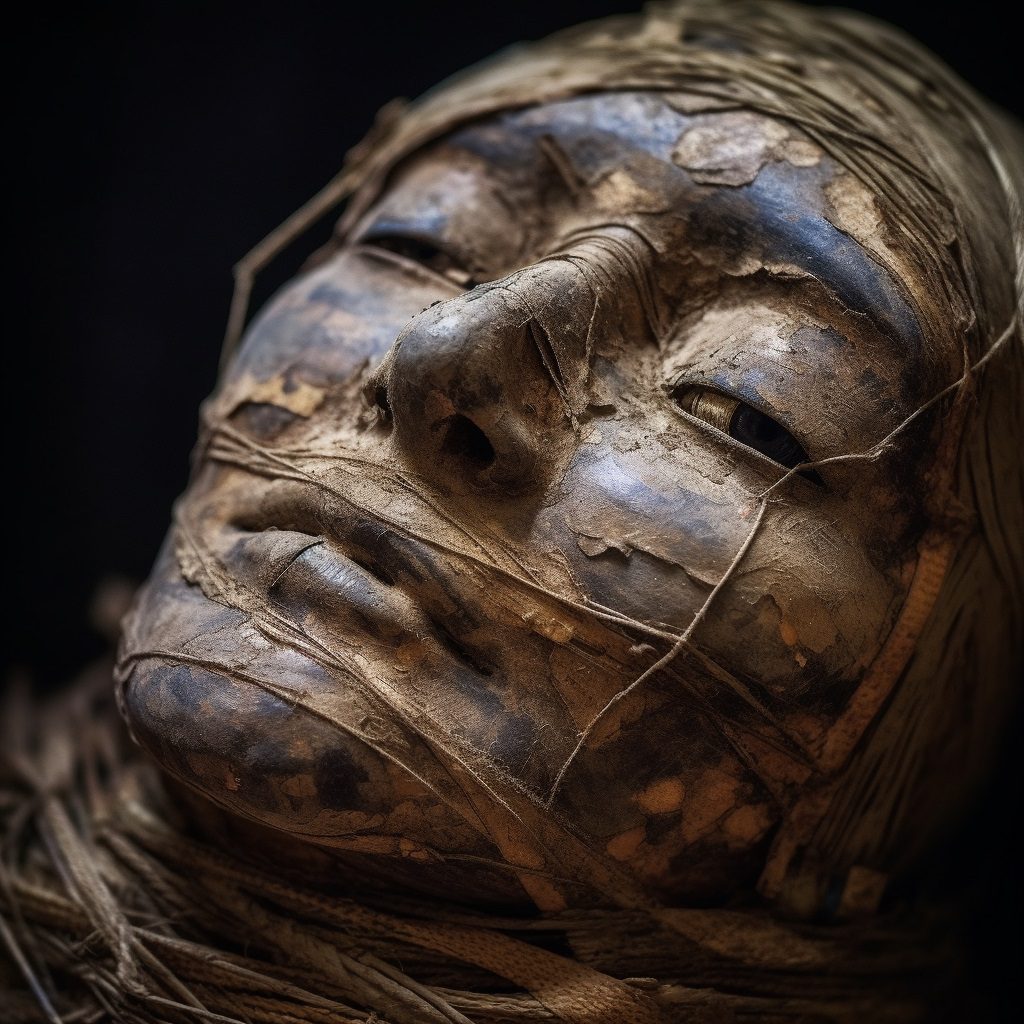
The mysteries surrounding the practice of ancient Egyptian mummification continue to intrigue scholars and nature enthusiasts alike. The process of preserving human remains through a combination of natural environmental factors and deliberate techniques has long been associated with the rich cultural history of Egypt.
In this blog post, we will delve into the intriguing world of Egyptian mummies by exploring Gebelin for evidence of early death rites and examining how accidental mummies may have inspired more advanced preservation methods. We’ll also discuss the remarkable discovery of a 5,000-year-old naturally preserved body that challenges existing theories on mummification origins.
Furthermore, we’ll investigate nature’s role in preserving bodies under harsh desert conditions and uncover how these unintentional occurrences influenced artificial techniques developed over time. Finally, we’ll examine the impact our understanding of ancient Egyptian mummification origins has on reevaluating existing theories about their culture and gaining insight into its evolution over millennia.
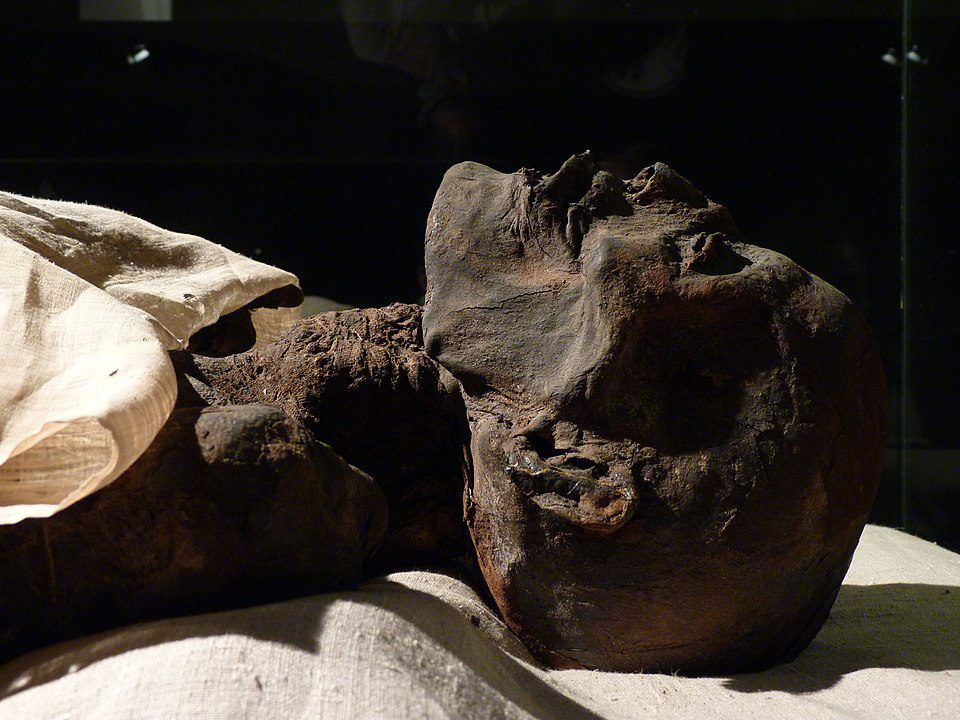
Unearthing the Origins of Mummification
Historians have long been intrigued by and discussed the beginnings of mummification in Ancient Egypt. Dr. Meredith Brand’s research into early death rites and burial practices sheds new light on how this ancient tradition may have evolved from natural occurrences, such as the accidental preservation of bodies in desert sands.
Exploring Gebelin for Evidence of Early Egyptian Death Rites
In her quest to uncover the roots of mummification, Dr. Meredith Brand has focused her attention on Gebelin, an area known for its rich archaeological finds related to early Egyptian culture. By studying artifacts and remains found here, she hopes to piece together clues about how these people approached death and what role nature played in their beliefs surrounding it.
Accidental Mummies Inspiring Deliberate Preservation Techniques
- Natural desiccation: The hot sun and dry sand prevalent in Egypt’s desert environment can cause bodies left exposed to rapidly lose moisture, resulting in unintentional preservation.
- Ancient observations: It is believed that early Egyptians may have noticed these naturally preserved corpses while burying their dead or during other activities near burial sites.
- Inspiration for deliberate techniques: Observations of accidental mummies could have inspired ancient Egyptians to develop methods for intentionally preserving bodies after death – leading them down a path toward artificial mummification practices still recognized today.
To support her theory about the origins of mummification stemming from natural processes observed by ancient Egyptians, Dr. Brand points toward evidence uncovered at various excavation sites around Gebelin. One such example is the 5,000-year-old natural mummy discovered by local farmers in the region – a find that challenged existing theories about when and how this practice began.
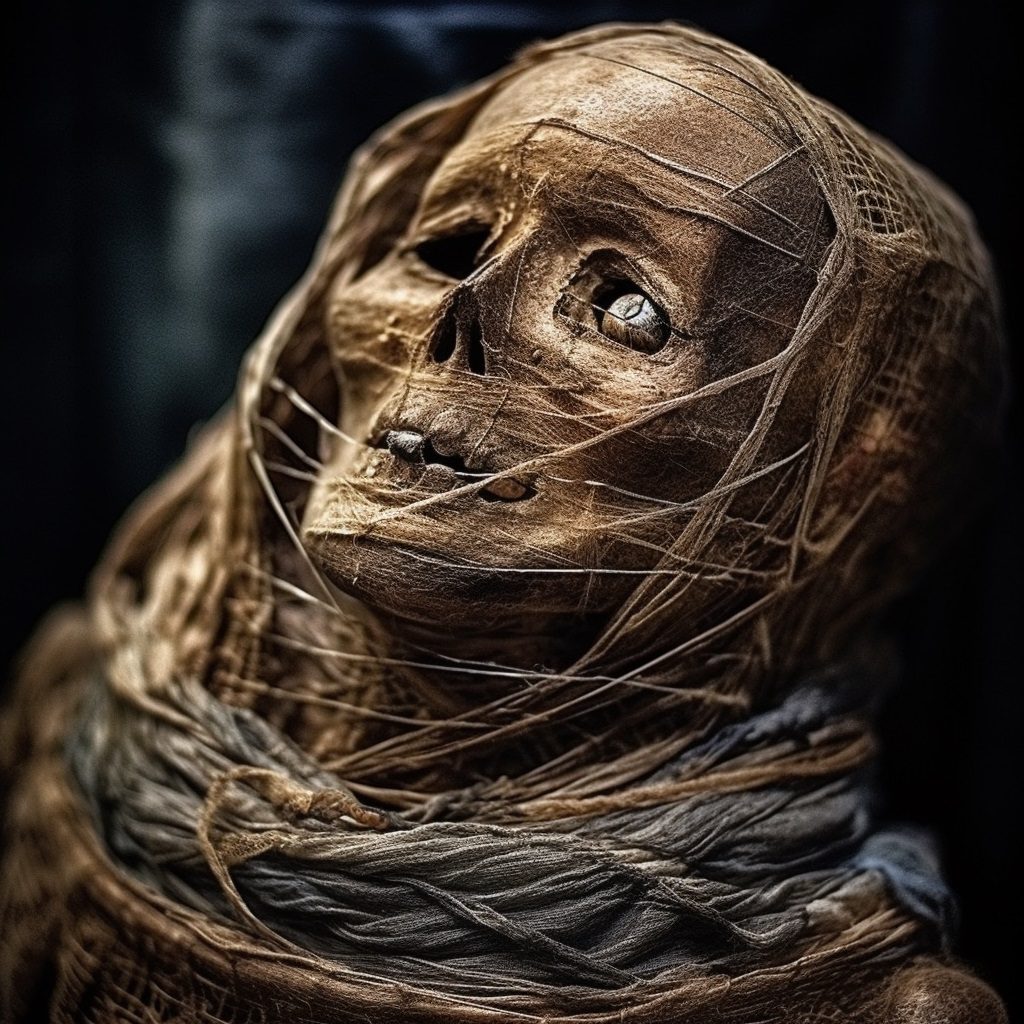
By examining these naturally preserved bodies and comparing them to those prepared using artificial techniques, Dr. Brand aims to identify similarities between the two processes. This could provide valuable insights into how early Egyptians sought ways to replicate nature’s effects on preserving human remains for eternity – ultimately shaping their complex rituals surrounding death and afterlife beliefs.
Intrigued by Dr. Meredith Brand’s research? Learn more about her groundbreaking work uncovering the origins of ancient Egyptian mummification practices at her official website.
The evidence from Gebelin is significant in understanding the origins of mummification, providing insight into early Egyptian death rites and burial practices. The 5,000-year-old mummy discovery further complicates our understanding of this ancient practice as it challenges existing theories on mummification origins.
Key Takeaway:
Dr. Meredith Brand’s research suggests that the origins of mummification in Ancient Egypt may have evolved from natural occurrences, such as the accidental preservation of bodies in desert sands. She explores Gebelin for evidence of early Egyptian death rites and believes that observations of accidental mummies could have inspired ancient Egyptians to develop methods for intentionally preserving bodies after death – leading them down a path toward artificial mummification practices still recognized today.
The 5,000-Year-Old Natural Mummy Discovery
Imagine the astonishment of local farmers when they stumbled upon a remarkably well-preserved mummy dating back over 5,000 years near Gebelin. This incredible find challenges not only existing theories on the origins of mummification but also provides valuable insights into how natural processes could have inspired ancient Egyptians to develop artificial methods for ensuring eternal life after death.
A Chance Discovery That Challenges Existing Theories on Mummification Origins
An unforeseen occurrence has caused experts in the fields of history and archaeology to reexamine their comprehension of ancient Egyptian funeral customs. Previously thought to be exclusive to royalty and high-ranking officials, it now seems that even commoners may have been subject to some form of preservation treatment in order to secure their place in the afterlife. Furthermore, evidence suggests that these efforts were likely driven by observations made from naturally preserved bodies like the one found near Gebelin.
Analyzing the Condition and Cause of Death for Clues About Early Burial Practices
To unravel this fascinating mystery further, researchers led by Dr. Meredith Brand have been meticulously analyzing every aspect of this ancient individual’s remains – from his physical condition at death to any signs pointing towards intentional preservation techniques being employed during his burial process. Some key findings include:
- Dental health: Analysis revealed severe tooth wear indicative of a diet heavy in coarse grains – typical among lower-class individuals during Egypt’s Predynastic Period (circa 6000 – 3150 BCE).
- Cause of death: While determining the exact cause of death remains elusive, the presence of a fractured skull suggests that this individual may have met a violent end.
- Preservation techniques: Although no definitive evidence has been found to confirm deliberate mummification efforts, researchers believe it is highly likely, given the astonishing state of preservation in which this body was discovered.
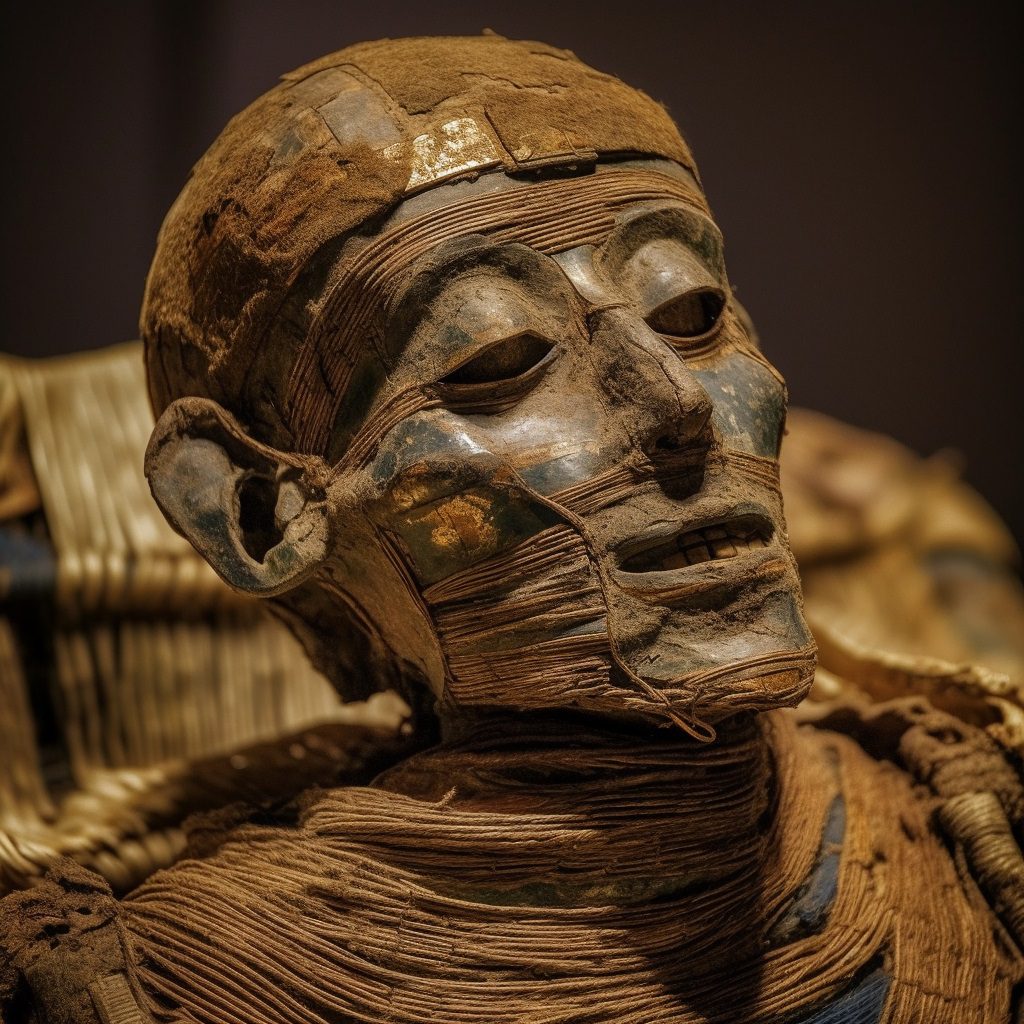
By examining these details and more, Dr. Brand’s team hopes to piece together an accurate picture of how ancient Egyptians’ understanding and application of natural preservation processes evolved over time – ultimately leading them down the path towards developing their own sophisticated methods for achieving eternal life after death through artificial mummification techniques.
The 5,000-Year-Old Natural Mummy Discovery has revealed a wealth of information about ancient burial practices and the role nature can play in preserving bodies. By analyzing this discovery, we can gain insight into how to develop artificial techniques that imitate nature’s example for future preservation efforts.
Key Takeaway:
Local farmers stumbled upon a well-preserved mummy dating back over 5,000 years near Gebelin, which challenges existing theories on the origins of mummification and suggests that even commoners may have been subject to some form of preservation treatment. Researchers are analyzing every aspect of this ancient individual’s remains to piece together an accurate picture of how ancient Egyptians’ understanding and application of natural preservation processes evolved over time.
Nature’s Role in Preserving Bodies
The desert environment played a crucial role in preserving the naturally-mummified body found near Gebelin. With its scorching sun and arid sand quickly evaporating water from corpses left exposed to the elements, nature inadvertently created ideal conditions for preserving human remains – possibly inspiring ancient Egyptians to replicate these effects artificially.
How Harsh Desert Conditions Led to Unintentional Body Preservation
Intriguingly, the harsh climate of Ancient Egypt served as an unwitting accomplice in preserving bodies. When deceased individuals were buried directly into the dry sands without any protective coverings or containers, their bodies would naturally dehydrate due to rapid evaporation caused by high temperatures and low humidity levels. This process prevented decomposition by inhibiting bacterial growth, thus leading to unintentional mummification.
- Hot Sun: The intense heat of the Egyptian sun rapidly dries out corpses left exposed on the surface or shallowly buried beneath it.
- Dry Sand: The parched desert sand acts as a natural desiccant that absorbs moisture from surrounding materials – including dead bodies – helping them stay preserved over time.
- Lack of Humidity: Low humidity levels within this arid environment further contribute towards preventing decay by reducing available moisture necessary for bacteria and other microorganisms responsible for breaking down organic matter.
Learning from Nature’s Example when Developing Artificial Techniques
Ancient Egyptians likely observed how well-preserved some naturally mummified bodies appeared after being uncovered by wind or other environmental factors. This realization may have led them to experiment with methods of replicating these natural preservation processes in a more controlled and deliberate manner.
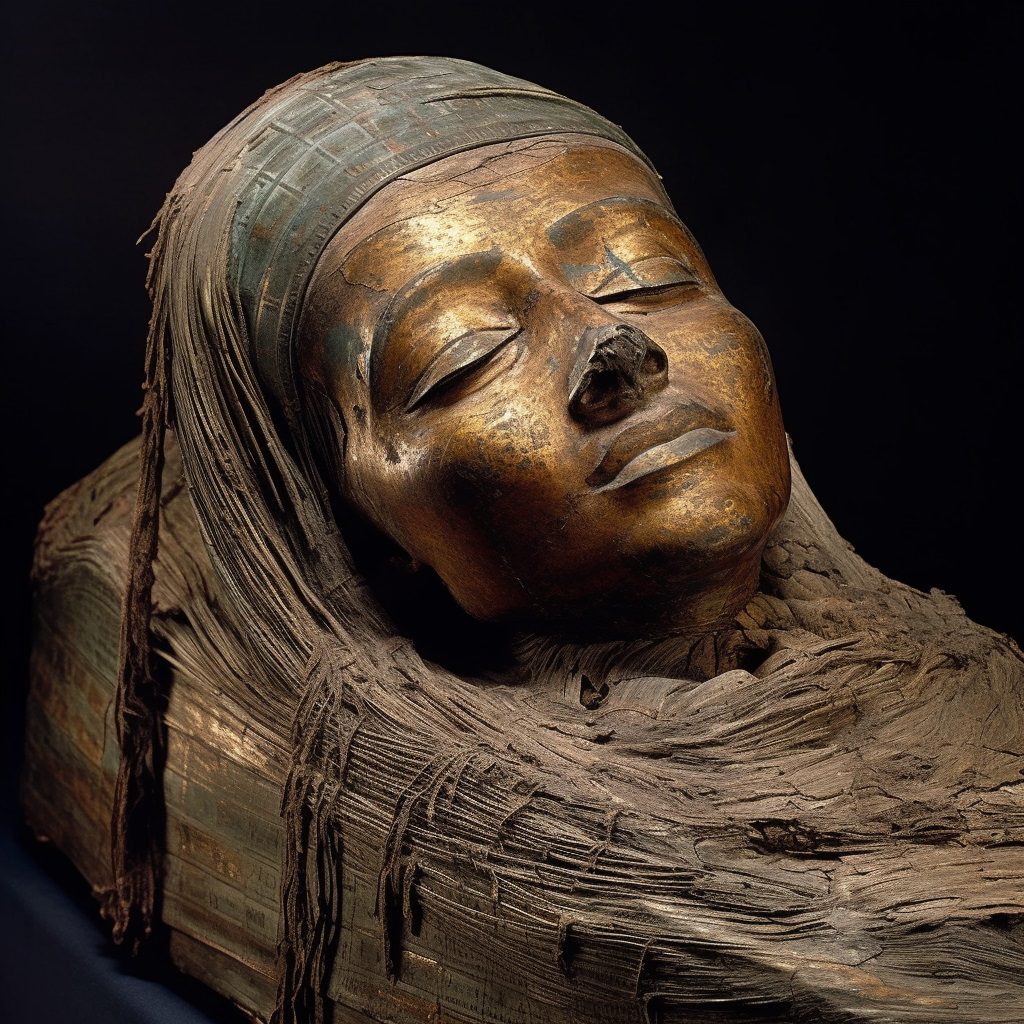
Over time, they developed increasingly sophisticated techniques for artificially mummifying their dead, such as using embalming fluids, bandages soaked in resins, and carefully placed amulets within the wrappings to protect the deceased on their journey into the afterlife. These advancements allowed them not only to preserve bodies more effectively but also to imbue them with religious significance – ensuring that those who underwent this sacred process would be granted eternal life beyond death’s door.
Religious convictions were evidently a significant factor in the formation of mummification methods, which have been inspired by nature’s own preservation processes. By exploring the evolutionary steps towards creating more sophisticated tools and techniques to replicate nature’s preservative properties, we can gain insight into how ancient Egyptians approached this complex task.
Key Takeaway:
The harsh desert climate of Ancient Egypt unintentionally led to body preservation through dehydration and inhibited bacterial growth, resulting in natural mummification. The ancient Egyptians likely observed this phenomenon and developed increasingly sophisticated techniques for artificially mummifying their dead, imbuing them with religious significance for eternal life beyond death’s door. They learned from nature’s example when developing these methods.
Evolutionary Steps Towards Artificial Mummification Techniques
In a breathtaking revelation, it appears that the Ancient Egyptians may have been inspired by nature’s unintentional preservation methods to develop their own artificial mummification techniques. As they observed the effects of desert conditions on corpses and learned from these natural processes, they began to harness this power deliberately through technology.
Developing Tools and Techniques to Replicate Nature’s Preservation Methods
The ancient Egyptians were renowned for their remarkable achievements in many areas, from architecture and agriculture to medicine, which included the development of techniques to replicate desert body preservation. It is no surprise then that they sought ways to mimic the remarkable body preservation achieved by harsh desert environments. They experimented with different embalming fluids, bandages, resins, salts like natron, and other materials until they perfected a process capable of preserving bodies for eternity.
- Embalming Fluids: A mixture of oils and herbs was used to cleanse the body before applying preservatives.
- Bandages: Linen strips soaked in resin or gum were wrapped around the body after it had been treated with natron salt.
- Natron Salt: This naturally occurring salt was essential in drawing out moisture from the corpse while also preventing bacterial growth.
- Egyptian Resin: A type of tree sap was applied over linen-wrapped limbs as an additional layer of protection against decay-causing organisms.
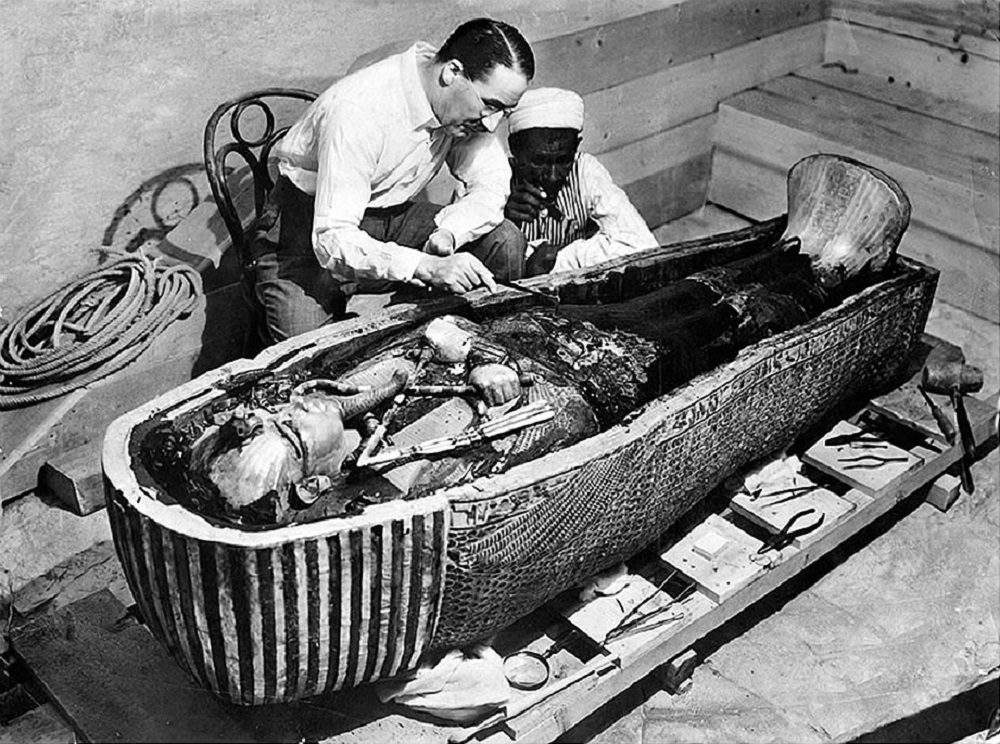
The Role of Religious Beliefs in Shaping Mummification Practices
Ancient Egyptian religion played a significant part in guiding their approach toward death rituals. The conviction that life beyond the grave could be accomplished through safeguarding one’s mortal form was deeply entrenched in their faith. The ancient Egyptians took great care to perform mummification with precision, including the removal and storage of internal organs.
For example, the removal and storage of internal organs – a process known as evisceration – was considered essential for successful passage into the afterlife. The heart believed to be the seat of intelligence and emotion, remained within the body while other vital organs were carefully preserved in canopic jars adorned with protective deities called the Four Sons of Horus.
The evolution from natural preservation methods observed in desert sands towards artificial mummification techniques employed by ancient Egyptians is truly fascinating. By understanding this journey, we gain a deeper appreciation for their innovative spirit and reverence for life beyond death.
The evolutionary steps towards artificial mummification techniques provide us with a greater understanding of the methods and practices used by ancient Egyptians to preserve their dead. Exploring the effects of these developments on our comprehension of Ancient Egyptian customs can give us more insight into how they developed over time.
Key Takeaway:
The ancient Egyptians developed their own artificial mummification techniques inspired by nature’s unintentional preservation methods. They experimented with different materials such as embalming fluids, bandages, resins, and natron salt to perfect the process of preserving bodies for eternity. Their religious beliefs played a significant role in guiding their approach toward death rituals, and every aspect of mummification was meticulously carried out.
Impact on Our Understanding of Ancient Egyptian Culture
The groundbreaking findings by Dr. Meredith Brand and the astonishing discovery of a 5,000-year-old natural mummy have had a profound impact on our understanding of ancient Egyptian culture. By exploring how early Egyptians may have been inspired by naturally preserved bodies, we can delve deeper into their intricate belief systems and rituals surrounding death and the afterlife.
Reevaluating Existing Theories about Mummification Origins
Prior to these revelations, historians believed that artificial mummification techniques were developed as an extension of religious beliefs in eternal life. However, Dr. Brand’s research suggests that it was nature itself which played a crucial role in shaping these practices. The accidental preservation of bodies in desert sands provided valuable insights for ancient Egyptians seeking ways to ensure everlasting existence beyond death.
This new perspective challenges conventional theories about the origins of mummification and invites us to reevaluate our assumptions about this fascinating aspect of ancient Egyptian culture. For instance, scholars might now consider whether other aspects, such as art or architecture, were similarly influenced by observations from the natural world around them.
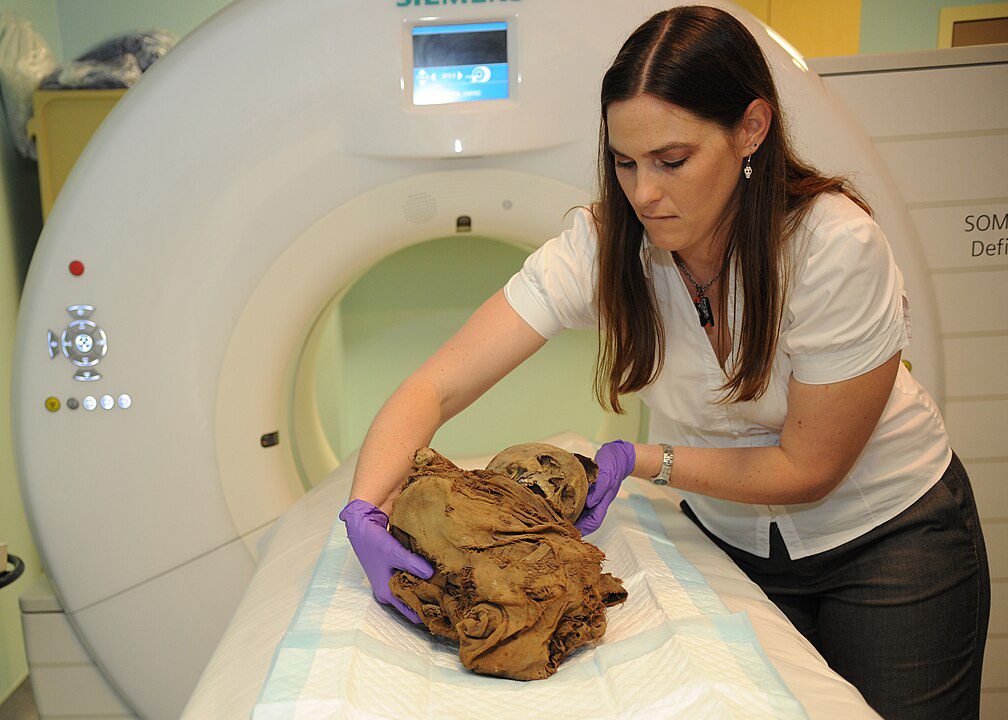
Gaining Insight into the Evolution of Cultural Practices over Time
- Natural Mummies: The Gebelin find demonstrates that even before formalized embalming processes existed, nature was already preserving human remains through its harsh desert conditions.
- Inspiration: As they observed these naturally preserved corpses, early Egyptians likely sought ways to replicate this phenomenon deliberately using available resources like resins and bandages (Encyclopedia Britannica).
- Technological Advancements: Over time, ancient Egyptians refined their mummification techniques, incorporating new tools and methods to ensure the most effective preservation of bodies for eternal life.
- Cultural Significance: The development of these practices was closely tied to religious beliefs in the afterlife, shaping a unique cultural identity that still captivates us today.
In light of Dr. Brand’s research and the discovery of this remarkable natural mummy, we are now better equipped to understand how nature played an integral role in shaping ancient Egyptian culture. By appreciating the influence of naturally preserved bodies on early death rites and burial practices, we can gain a more nuanced understanding of this enigmatic civilization’s approach toward mortality and eternity.
Key Takeaway:
Dr. Meredith Brand’s research on a 5,000-year-old natural mummy challenges conventional theories about the origins of ancient Egyptian mummification and invites us to reevaluate our assumptions about this fascinating aspect of their culture. By exploring how early Egyptians may have been inspired by naturally preserved bodies, we can gain insight into the evolution of cultural practices over time and appreciate the influence of nature on their approach toward mortality and eternity.
FAQs Concerning Ancient Egyptian Mummification Origins
What is the origin of Egyptian mummification?
The origins of Egyptian mummification can be traced back to approximately 3500 BCE when natural preservation occurred due to the hot and dry desert environment. This accidental discovery inspired ancient Egyptians to develop artificial techniques for preserving bodies, which evolved over time into a complex process involving embalming, wrapping in linen bandages, and placing them within protective tombs or sarcophagi.
How was the first mummy created according to Egyptian mythology?
According to Egyptian mythology, the god Osiris became the first mummy after his brother Set murdered him. Isis and Nephthys found Osiris’s body parts scattered across Egypt and reassembled them. Anubis then wrapped Osiris’s body in linen cloth with resinous substances, creating a template for future human mummies as part of their journey toward eternal life.
What are some facts about ancient Egyptian mummification?
- Mummification was an essential aspect of ancient Egyptians’ religious beliefs regarding death and the afterlife.
- The process involved removing internal organs (except the heart), treating them with natron salt for dry-out moisture content, and applying oils/resins before wrapping them in linen bandages.
- Priests performed rituals during each stage while reciting spells from the Book of the Dead.
- Mummies were placed inside multiple coffins, often decorated with images representing deceased individuals’ social status or religious beliefs.
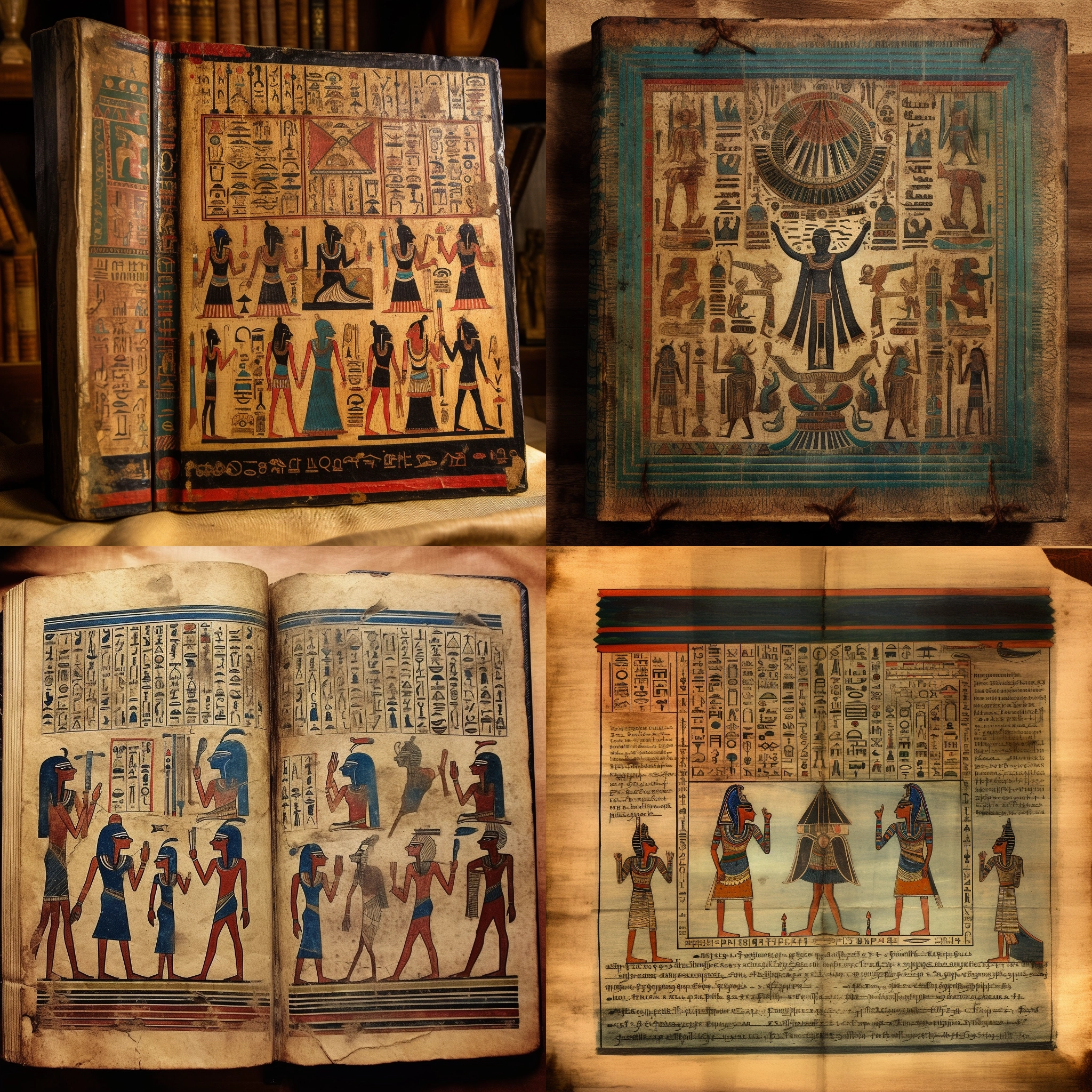
Conclusion
Ancient Egyptian Mummification Origins
In conclusion, the origins of mummification in Ancient Egypt are complex and multifaceted. The mummification process was a crucial part of Ancient Egyptian culture, and it evolved over time. From exploring early death rites to accidental mummies inspiring deliberate preservation techniques, we can see how cultural practices developed. The discovery of a 5,000-year-old natural mummy challenge existing theories on the subject and provides valuable insights into early burial practices.
Nature played a significant role in preserving bodies through harsh desert conditions, which led to unintentional body preservation. This understanding helped develop artificial mummification techniques that replicated nature’s methods while also being shaped by religious beliefs. Reevaluating existing theories about the origins of Egyptian mummies has allowed us to gain insight into the evolution of cultural practices over time and better understand Ancient Egyptian culture as a whole.






































